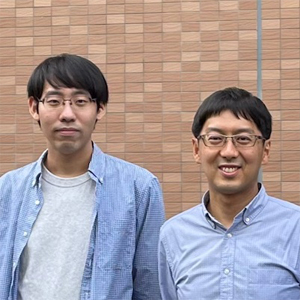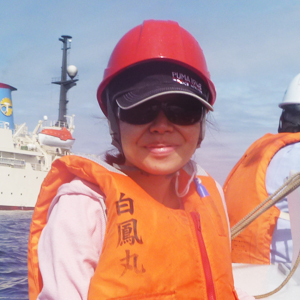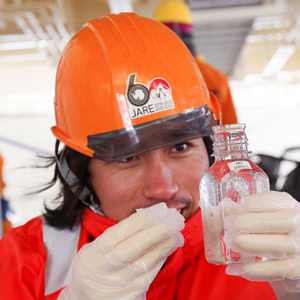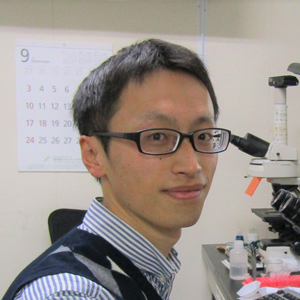Press release with author’s message
— From ArCS II News Letter No.8 —
In ArCS II Newsletter No.8, the authors of articles published in 2023 spring and summer contributed their research, thoughts on their research, and future prospects.
*Affiliations are at the time of the newsletter publication.
Dominant Role of Arctic Dust in the Formation of Ice crystals in Arctic Low-level Clouds

Kei Kawai (Photo: Left)
(Graduate School of Environmental Studies, Nagoya University)
Hitoshi Matsui (Photo: Right)
(Graduate School of Environmental Studies, Nagoya University)
Recent experimental studies have showed that dust emitted from the Arctic land surface (Arctic dust) during summer and fall has a remarkably high ability to promote the formation of ice crystals in clouds, but its impact on the formation of ice crystals in Arctic clouds was unknown. This study used a global climate model to find that Arctic dust plays a dominant role in the formation of ice crystals in Arctic low-level clouds (at a height of about 0-3 km) during summer and fall.
| Title | Dominant role of Arctic dust with high ice nucleating ability in the Arctic lower troposphere |
| Journal | Geophysical Research Letters |
| Published | April 26, 2023 |
| Authors | Kei Kawai, Hitoshi Matsui, Yutaka Tobo |
| DOI | https://doi.org/10.1029/2022GL102470 |
Press Release
Plant-Microbe Dynamics Shape Arctic Tundra Soil Bacteria Diversity

Wong Shu-Kuan
(Arctic Environment Research Center, National Institute of Polar Research)
Our research in the low Arctic tundra revealed the complex link between vegetation type and soil bacteria distribution. We identified two bacterial groups: adaptable generalists and less adaptable specialists. Generalist bacteria serve as “bridge species,” linking various microbial communities and impacting overall soil bacteria diversity, while specialists form selective connections among themselves. Additionally, our study underscores the role of vegetation types in regulating these bacterial populations. Climate change, with rising temperatures and changing vegetation patterns, may affect generalist bacteria distribution, while sensitive specialist bacteria could face greater restrictions. These changes could disrupt plant-soil interactions and the Arctic ecosystem.
| Title | Vegetation as a key driver of the distribution of microbial generalists that in turn shapes the overall microbial community structure in the low Arctic tundra |
| Journal | Environmental Microbiome |
| Published | May 10, 2023 |
| Authors | Shu-Kuan Wong, Yingshun Cui, Seong-Jun Chun, Ryo Kaneko, Shota Masumoto, Ryo Kitagawa, Akira S. Mori, An Suk Lim, Masaki Uchida |
| DOI | https://doi.org/10.1186/s40793-023-00498-6 |
Press Release
Metagenome-assembled Genome of N2-fixing Bacteria from the Arctic Ocean

Takuhei Shiozaki
(Atmosphere and Ocean Research Institute, The University of Tokyo)
N2 fixation is a globally biogeochemically important process. It has not yet been determined how N2-fixing bacteria (diazotrophs) are able to inhabit N-rich polar oceans. Here we answered this question based on diazotroph genomes constructed from metagenomic data from samples collected in the Arctic Ocean and our own global marine metagenomic database. We found cosmopolitan diazotrophs distributed globally that have the potential for cold adaptation. In contrast, we also found Arctic-endemic diazotrophs, which have specific genes that help them adapt to the Arctic environment. This study provides a new perspective on the global distribution and ecology of marine diazotrophs.
| Title | Distribution and survival strategies of endemic and cosmopolitan diazotrophs in the Arctic Ocean |
| Journal | The ISME Journal |
| Published | May 23, 2023 |
| Authors | Takuhei Shiozaki, Yosuke Nishimura, Susumu Yoshizawa, Hideto Takami, Koji Hamasaki, Amane Fujiwara, Shigeto Nishino, Naomi Harada |
| DOI | https://doi.org/10.1038/s41396-023-01424-x |
Press Release
Arctic Copepods are Well Adapted to Regional Environments under the Recent Climate

Kohei Matsuno
(Faculty of Fisheries Sciences, Hokkaido University)
We investigated how to adapt dominant copepods to environmental changes in the Pacific Arctic Ocean under the recent climate. Regional differences in their grazing activity and growth were found even in the same species, which means they survive in environmental conditions with flexible life cycles. To improve our understanding of the impact of climate change on marine ecosystems, further studies of the ability of adaptation/flexibility in the life cycle of marine organisms are required.
| Title | Geographic variation in population structure and grazing features of Calanus glacialis/marshallae in the Pacific Arctic Ocean |
| Journal | Frontiers in Marine Science |
| Published | September 20, 2023 |
| Authors | Minami Ishihara, Kohei Matsuno, Koki Tokuhiro, Yasuhiro Ando, Kazutoshi Sato, Atsushi Yamaguchi |
| DOI | https://doi.org/10.3389/fmars.2023.1168015 |
Press Release(only in Japanese)
